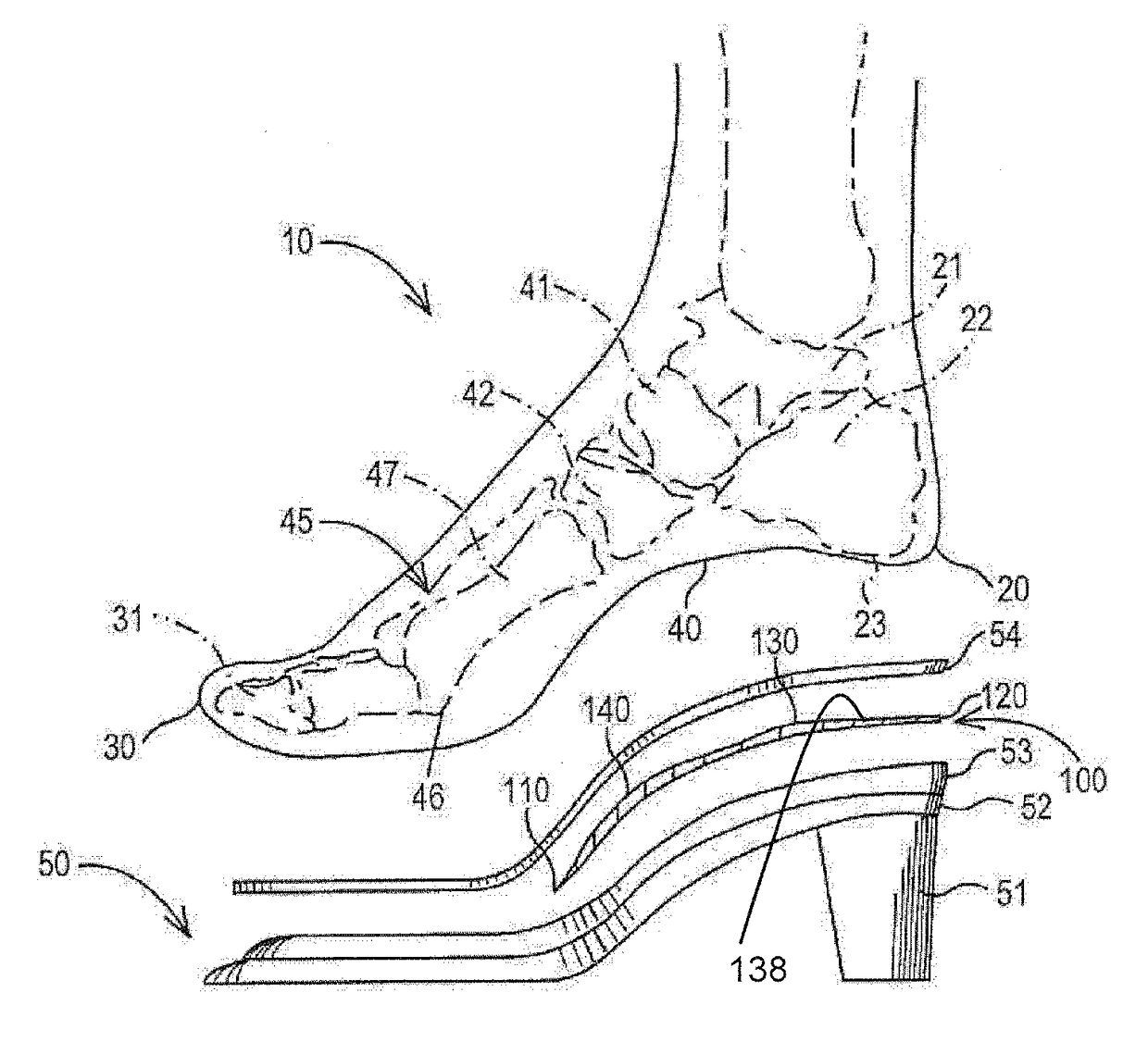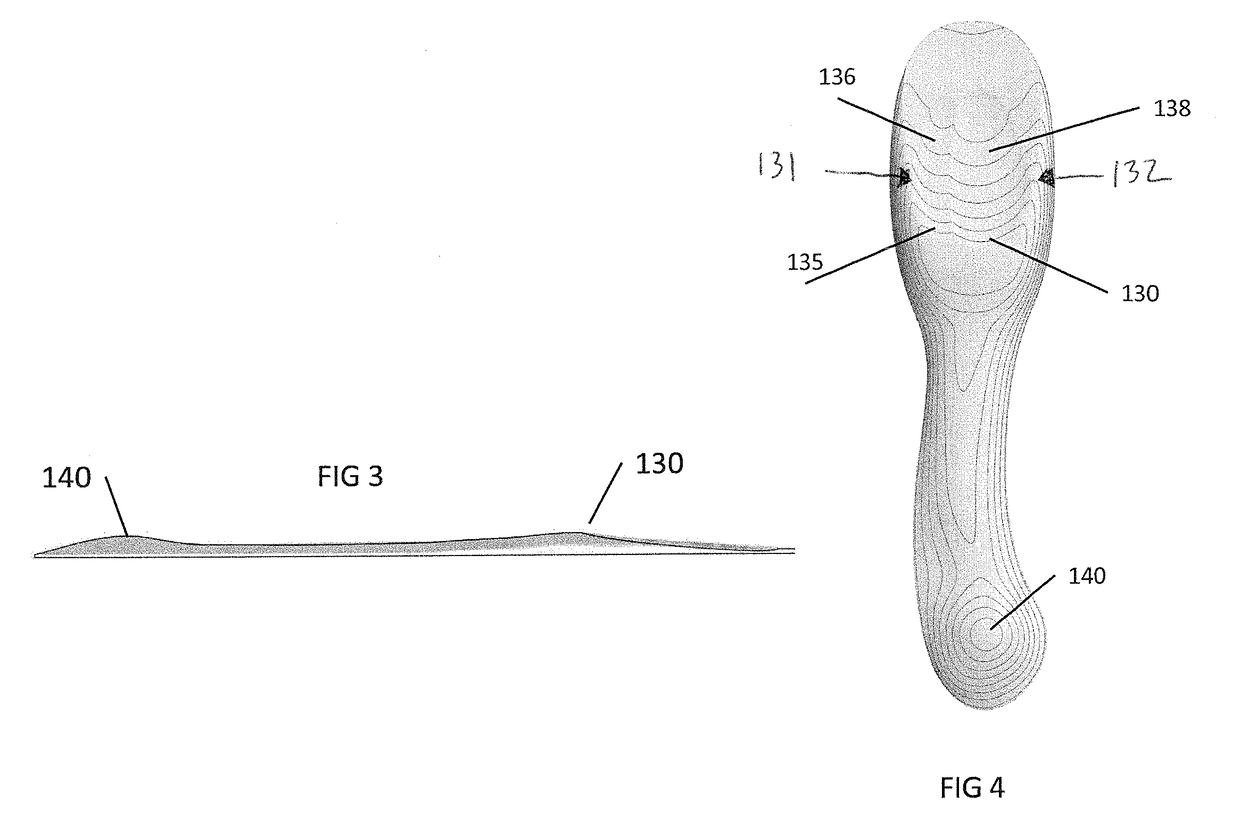Device for high-heeled shoes and method of constructing a high-heeled shoe
a high-heeled shoe and shoe technology, applied in the field of shoes, can solve the problems of introducing additional complexity and/or quality control issues in shoe manufacturing, affecting the comfort and stability of the shoe, and the reputation of conventional high-heeled shoes, so as to achieve smooth contouring and improve comfort and ankle stability. the effect of surprising and significant improvemen
- Summary
- Abstract
- Description
- Claims
- Application Information
AI Technical Summary
Benefits of technology
Problems solved by technology
Method used
Image
Examples
Embodiment Construction
[0025]The present invention provides a device which improves comfort and is easily installed in high-heeled shoes. For purposes of this invention, it is to be understood that high-heeled shoes include all footwear having a heel which is about one inch or higher. The benefits of the invention are achieved when a device is positioned in a shoe to underlie the metatarsal shafts and calcaneus of the wearer. Typically, the device is positioned on the insole board or sock liner of a high-heeled shoe. Preferably, the device is sufficiently flexible so that it readily conforms to the upper surface of the insole board or sock liner on which it is positioned. The device may be formed of any materials known to those of ordinary skill in the art that can be molded or shaped and that will produce a device flexible under normal conditions of use of a shoe, while retaining sufficient dimensional stability to retain the benefit of the invention.
[0026]In the preferred embodiment, the device is shape...
PUM
 Login to View More
Login to View More Abstract
Description
Claims
Application Information
 Login to View More
Login to View More - R&D
- Intellectual Property
- Life Sciences
- Materials
- Tech Scout
- Unparalleled Data Quality
- Higher Quality Content
- 60% Fewer Hallucinations
Browse by: Latest US Patents, China's latest patents, Technical Efficacy Thesaurus, Application Domain, Technology Topic, Popular Technical Reports.
© 2025 PatSnap. All rights reserved.Legal|Privacy policy|Modern Slavery Act Transparency Statement|Sitemap|About US| Contact US: help@patsnap.com



